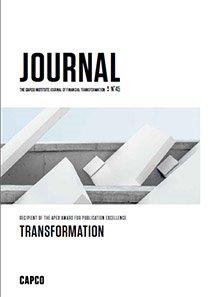Across the industry, financial institutions and financial technology (FinTech) companies are exploring the potential for transformative technology by implementing Robotic Process Automation (RPA) to improve service quality, reduce cost, and increase operational efficiency and effectiveness.
Essentially, RPA is a software robot that mimics human functions through user interfaces. These robots interpret third-party applications and are configured to execute data and process flows identical to that of a human user. Traditional automated solutions typically require a higher level of programming knowledge; however, RPA solutions can be handled by non-technical business users.
A subject matter expert or business operations employee would walk through the required process on an RPA interface, and code would be generated automatically. RPA uniquely disregards the need for programming skills, unlike traditional business process management tools. A key factor in enabling RPA implementation is the underlying data setup and management. Well-defined data structures are needed for effective automation – the easier the codification, the easier it is to create the underlying data flow, and automate it.
This paper explores the centrality of data in enabling RPA, presents frameworks to identify and evaluate candidate-RPA functions, and provides examples of data-centric activities to implement RPA.
